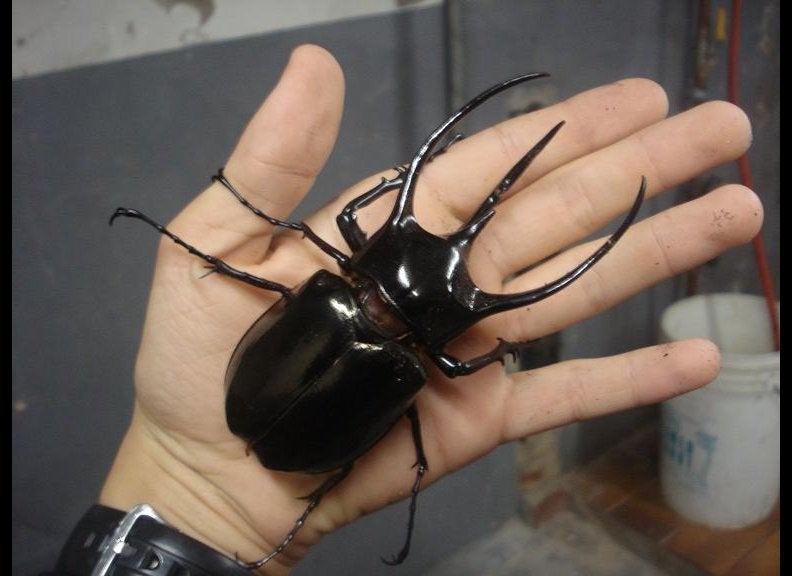Did you know that only one in ten of the cells in your body is actually human? That's right. A whopping 90 percent of your cells are bacterial, viral, or parasitic in nature.
The NIH's Human Microbiome Project is ambitiously aiming to characterize the microbial communities living in us. And while the vast majority of these germs are symbionts, once in a while, we pick up a straggling critter that's not just along for the ride--it's there to leach our nutrients at all costs.
These parasites fall in five distinct categories, the first of which is the most numerically abundant animal on Earth: nematodes.
Check out the video above and/or click on the link below to learn more about human parasites, and leave your thoughts in the comments section at the bottom of the page. Don't be shy, talk nerdy to me!
Hi everyone. Cara Santa Maria here. Our bodies are made up of around 100 trillion cells, and only about 10 percent of those are actually human. No, I'm not saying you're part alien--not exactly. But you are part microbe, and these germs are mostly there to help us. It's called the human microbiome, and scientists are currently trying to map it in an effort to learn more about its role in our health.
Although we mostly host bacteria, a lot of microorganisms take up residence in our tissues, like viruses, yeast, and even parasites. But parasites aren't too interested in symbiotic living. They truly are monsters that live inside us, and they can make us sick -- very sick.
Let's count down five types of parasites that make our skin--and our guts--crawl.
A common culprit: the nematode. It's a fancy name for roundworm. And they're really abundant. Actually, four out of five animals living on earth are nematodes. They infect everything from bugs to whales to well, us.
This is the most common infectious nematode in the U.S. Over 30 percent of school aged kids will get pinworms, and some estimates are as high as 80 percent. Their eggs are spread by unwashed hands, they can hatch in kids' intestines and then mature female worms meander down to the, um...anal region to lay more eggs, leading to what doctors call an itchy bum (I think that's the technical term).
Other worms that can make us sick are flatworms. Tapeworms latch on to the walls of our intestines and feed off our nutrients. Adult tapeworms can grow up to 50 feet--you heard me--50 feet long and live in a host for upwards of 20 years. There are other kinds of flatworms too. This one invades the bile ducts of your liver. This one can live in your blood. And this one can even infect your brain.
And that's not the worst of it. Remember looking at amoebas in high school under the microscope? Well you do not want to get amebic dysentery. It's the second leading cause of death from parasites worldwide. But don't worry, those single-celled, shape-shifting creatures that your biology teacher gave you in a jar aren't the same species that cause this infection. Amoebas are, however, a type of protozoan. And this group of parasites is particularly gnarly.
This one is the most common infectious parasites in America, causing Trichomoniasis, or Trich. It's actually an STD, and over two million women in the U.S. have the infection. It's diagnosed with a pap test and treated with drugs, but as usual, our risk goes way down if we use condoms.
The most common parasitic infection worldwide comes from this protozoan, spread by the anopheles mosquito. It causes malaria, by first invading the liver and then the blood. Malaria kills 1.2 million people a year, making it one of the world's deadliest diseases.
Other not-so-common parasitic protozoa include this guy, which causes diarrhea and has developed resistance to chlorine. Fun! And this one, which we can get from Mr. Meower's litter box. It can actually alter behavior in infected animals and may even lead to an increased suicide risk in humans. And let's not forget about leishmaniasis and african sleeping sickness, two devastating diseases caused by protozoan infection.
And on to number two on the list: the ectoparasites! These little creepy crawlies live on us, not in us. Common culprits are head lice, the other kind of lice, bedbugs, scabies, and demodex, the only arthropods known to take up permanent residence on humans. Ninety-eight percent of people have these eight-legged monsters living in their eyelash, eyebrow, or nose hair follicles.
Oh wait! How could I end a video about parasites without discussing everyone's favorite itty-bitty parasitic catfish? Yes, I'm talking about the candiru, also known as the toothpick fish. It lives in the Amazon River and has a nasty habit of swimming up into, well, orifices. Although there's only one documented case of this tiny fish sojourning in a man's urethra, I doubt you or I would like to be the second. So, what do you think? Any good parasite stories for me? Sorry this one was so gross, but you know the drill. Come on, talk nerdy to me!
See all Talk Nerdy to Me posts.Like Cara Santa Maria on Facebook.Follow Cara Santa Maria on Twitter.
